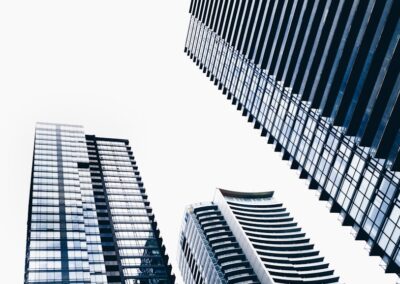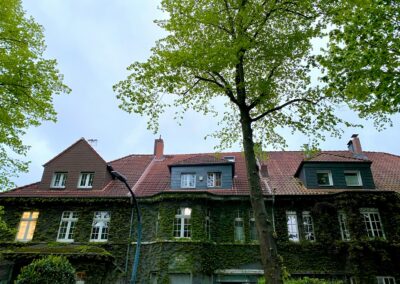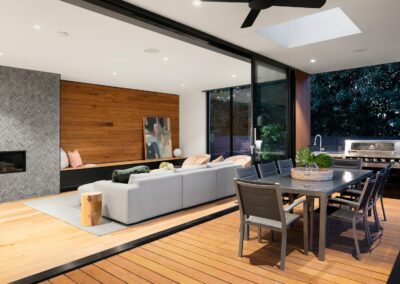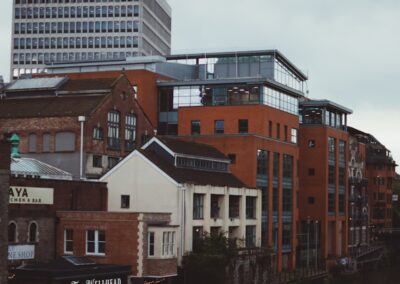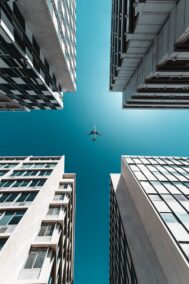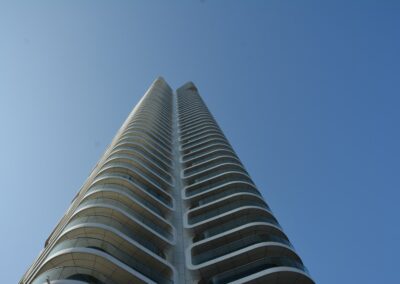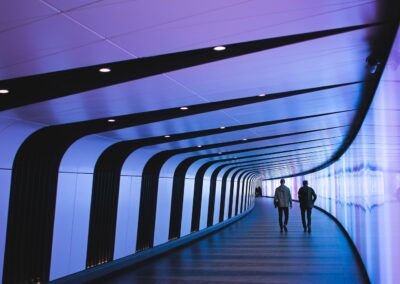The Future of Eco-Friendly Living Spaces
The Integration of Green Roofs in Sustainable Homes
Sustainable homes with green roofs and living walls are becoming a cornerstone of modern urban development, particularly in cities like Riyadh, Dubai, and across Saudi Arabia and the UAE. Green roofs, which involve the layering of vegetation over a waterproofing system installed on top of a flat or slightly sloped roof, offer numerous environmental benefits. They not only enhance the aesthetic appeal of buildings but also contribute significantly to urban biodiversity and air quality.
Green roofs serve as mini-ecosystems, providing habitats for various species of plants, birds, and insects. This increase in biodiversity is particularly crucial in urban areas where natural habitats are often limited. By incorporating a variety of native and adaptive plant species, green roofs create a microhabitat that supports local wildlife, contributing to the conservation of urban biodiversity.
Additionally, green roofs play a vital role in improving air quality. Plants on green roofs absorb pollutants and carbon dioxide, releasing oxygen through the process of photosynthesis. This natural air filtration system helps reduce the concentration of harmful gases in the atmosphere, leading to cleaner and healthier urban environments. Moreover, green roofs can mitigate the urban heat island effect by providing a cooling effect through evapotranspiration, thus lowering ambient temperatures and reducing the need for air conditioning.
Benefits of Living Walls in Sustainable Homes
Living walls, also known as vertical gardens or green walls, are another innovative feature of sustainable homes. These structures involve the cultivation of plants on vertically erected panels that are attached to the walls of buildings. Similar to green roofs, living walls offer numerous ecological and health benefits, making them an integral part of sustainable urban development.
One of the primary benefits of living walls is their ability to improve air quality. The dense foliage of living walls acts as a natural air filter, trapping dust particles and absorbing pollutants such as volatile organic compounds (VOCs) and carbon dioxide. This process results in cleaner air within and around buildings, contributing to the overall health and well-being of residents.
Living walls also enhance the thermal performance of buildings. By providing an additional layer of insulation, they help regulate indoor temperatures, reducing the need for heating in the winter and cooling in the summer. This energy efficiency not only lowers utility bills but also reduces the carbon footprint of buildings, aligning with global sustainability goals. Furthermore, the presence of greenery has been shown to have a positive impact on mental health, reducing stress levels and improving mood, making living walls a valuable addition to residential and commercial spaces.
Implementing Green Technologies in Urban Development
The integration of green roofs and living walls into urban development projects requires careful planning and execution. In cities like Riyadh and Dubai, where innovative architectural designs are prominent, the incorporation of these green technologies can set a benchmark for sustainable living. Urban planners and architects must consider factors such as the structural integrity of buildings, climate conditions, and the selection of appropriate plant species to ensure the success of these projects.
In addition to their environmental benefits, green roofs and living walls can also contribute to the economic value of properties. Buildings with these sustainable features are often more attractive to buyers and tenants, leading to higher property values and rental rates. This economic incentive encourages developers to adopt green technologies in their projects, fostering a culture of sustainability in the real estate industry.
Governments and municipalities can play a crucial role in promoting the adoption of green roofs and living walls by offering incentives such as tax rebates, grants, and subsidies. Public policies that mandate or encourage the inclusion of green technologies in new constructions and renovations can drive widespread adoption, transforming urban landscapes into greener, healthier, and more sustainable environments.
Conclusion: Embracing the Green Revolution in Urban Living
The integration of green roofs and living walls in sustainable homes represents a significant step towards creating eco-friendly urban environments. By enhancing biodiversity, improving air quality, and contributing to energy efficiency, these green technologies address some of the most pressing environmental challenges faced by modern cities. In regions like Saudi Arabia and the UAE, where rapid urbanization is accompanied by a commitment to sustainability, the adoption of green roofs and living walls can lead to a more resilient and livable urban future.
For business executives, mid-level managers, and entrepreneurs, understanding the benefits and implementation strategies of green roofs and living walls is essential for driving sustainable development. By incorporating these technologies into their projects, they can contribute to the creation of healthier and more sustainable communities, aligning their business practices with global environmental goals.
As we continue to explore innovative solutions to urban sustainability challenges, green roofs and living walls stand out as effective and versatile options. Embracing these technologies not only enhances the quality of life for urban residents but also sets a precedent for future developments. By prioritizing sustainability in urban planning and construction, we can build cities that thrive in harmony with nature, ensuring a better future for generations to come.
#SustainableHomes #GreenRoofs #LivingWalls #Biodiversity #AirQuality #SaudiArabia #UAE #Riyadh #Dubai


